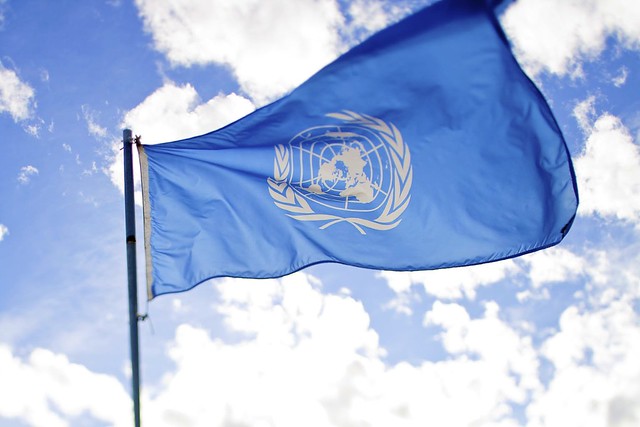10 Cool Facts About the United Nations

The United Nations is an international organization that was founded in 1945. At the end of the Second World War, many countries came together to focus on global peace, climate change, humanitarian emergencies and country development. The organization has become a forum for countries to negotiate and solve problems together in a regulated environment. Below are 10 cool facts about the United Nations.
10 Cool Facts About the United Nations
-
- The U.N. Has Almost 200 Member States
There are currently 196 member states in the United Nations. These individual states are all recognized by the United Nations as members of the international organization. There are only four countries that are non-members of the U.N. They are Kosovo, Palestine, Taiwan and Vatican City. These countries have received invitations to join the U.N., but have yet to accept. - Branches and Programs of the U.N. Received the Nobel Peace Prize 11 Times
Over the last 70 years, the United Nations has been given 11 Nobel Peace prizes awarded to various agencies, specialized programs and initiatives. This prize was inspired by the last will of Alfred Nobel in 1895. Upon his death, he left most of his fortune to those who made advancements for the betterment of humanity in the areas of physics, chemistry, physiology, medicine, literature and peace. - The United Nations Was Proposed in 1942
United States President Franklin D. Roosevelt coined the term the “United Nations” on January 1, 1942. Representatives of 26 nations came together at that time in order to fight the Axis Powers during World War II. However, the U.N. did not officially create a charter until 1945. The organization was officially formed in October 1945 when 51 member states ratified its charter. This day is now celebrated as United Nations Day. - The U.N. Has Six Official Languages
In 1946, the U.N. established six official languages for its meetings and distributed documentation. The languages are Arabic, Chinese, English, French, Russian and Spanish. During meetings delegates and representatives must utilize one of these languages or provide a written interpretation in one of them. Each language is recognized on a specific day of the year to celebrate cultural diversity and multilingualism. - The U.N. Has Its Own News Site
In order to keep the world updated on pertinent international issues and achievements, the United Nations has a news site. The site separates stories by world regions, topics and timeliness. The site is available in the official languages of the U.N. and has both a written and audio option. - It Prioritizes Specific Global Issues
Conflict resolution and peacekeeping are the main efforts of the United Nations, but the organization has many other branches of foreign assistance. Through specialized programs, the U.N. also addresses global issues such as decolonization, climate change, ending world poverty, children’s rights and international law. The website also outlines fast facts to engage readers about various topics. - The U.N. Hosts International Court Hearings
The main body of the United Nations judicial system is the International Court of Justice. It is composed of 15 judges who each serve nine-year terms and are elected by the U.N. General Assembly and Security Council. This court provides legal advising and settles disputes between member states. It also regulates global commons, such as environmental conservation, international waters, outer space and global trade, and ensures that human rights violations are prosecuted. - The U.N. Has 36 Specialized Agencies, Programs and Partnerships
There are 36 agencies and programs known as the “U.N. Family.” The programs are funded through voluntary contributions and are considered independent international organizations. The agencies and programs specialize on different issues. For example, UNICEF is the United Nations International Children’s Emergency Fund and focuses on ensuring the proper treatment of children worldwide and the protection of children’s rights. - The Official Emblem Hasn’t Changed Since 1946
The United Nations flag and symbol are blue and white. The design team created the logo in 1945, and it was officially adopted by the organization in 1946. The emblem is “a map of the world representing an azimuthal equidistant projection centered on the North Pole, inscribed in a wreath consisting of crossed conventionalized branches of the olive tree, in gold on a field of smoke-blue with all water areas in white,” according to the original description. - The U.N. Has the First Recorded Definition of Human Rights
In 1948, the United Nations General Assembly drafted the first Universal Definition of Human Rights (General Assembly resolution 217 A). It was drafted by representatives from different legal and cultural backgrounds to make it more comprehensive. It sets out fundamental human rights that should be protected; condemning slavery, torture, imprisonment without trial and prejudice. It has been translated into more than 500 languages.
- The U.N. Has Almost 200 Member States
The United Nations has worked for decades to protect human rights around the world. These 10 cool facts about the United Nations shed some light on the history of the organization as well as some of its policies.
– Emily Triolet
Photo: Flickr
Photo: Flickr
